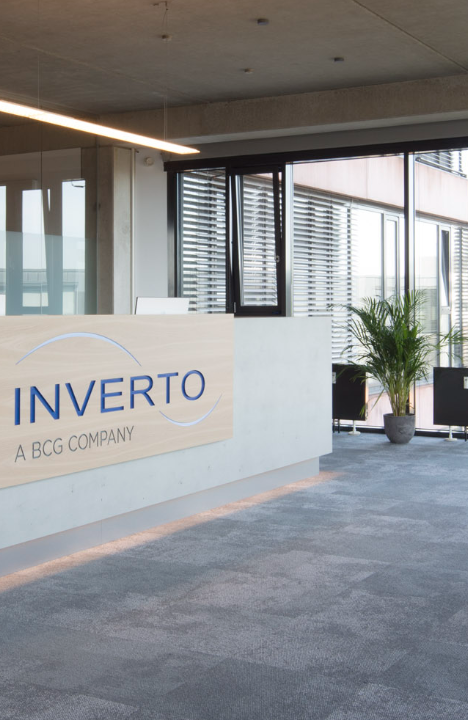Businesses around the world are struggling with a ‘perfect storm’ of raw material shortages and supply chain strain. What’s causing the issues and how can firms adapt?
“I think we’re bouncing from one disaster to another,” says Jason Webb, managing director at Sussex manufacturer Electronic Temperature Instruments (ETI), neatly summing up the state of the world today.
Webb lists a series of ominous challenges his business is facing. Some of the firm’s thermometers use a particular microchip, the price of which has rocketed from around £4 per unit pre-pandemic, to £60 today. His company is also competing for components with thousands of other firms, which means the parts often end up going to the highest bidder.
“Our products sell for under £100, so even an extra £10 on a chip [that might have previously cost £1] is really critical to us.” Unfortunately, car manufacturers also use the chips ETI needs – and absorbing an extra £10 into vehicle cost is much easier. Deliveries of parts are slower than ever, too. Widgets that once took 12 to 36 weeks to arrive, now take between 70 and 100.
Then there’s the impact of today’s global events, which will start to filter through to his company. Ukraine is a major manufacturer of stainless steel – the same material is used in ETI’s thermometers. While the war hasn’t led to shortages just yet, Webb reckons “a blackhole” in supply could appear in future.
Supply chain problems and shortages of raw materials have regularly hit headlines over the past three years. The scarcity of HGV drivers in 2021, the ongoing lack of computer chips, rolling Covid-19 lockdowns in China, or snarl-ups to global shipping, have garnered most attention. Yet what is often missed in these stories is how much deeper – and more complex – the issues are.
Perplexingly, few of the problems facing global industry have a simple cause and effect – or a straightforward solution. The issues affecting the supply of one raw material – and all products made from it – are often distinct from those affecting others. This makes addressing issues far more challenging.
To understand the causes of today’s supply chain woes, it’s helpful to take a step back and look at how businesses procure goods. Professor Edward Sweeney of Heriot-Watt University has studied supply chains for decades and notes how international they have become since the 1980s.
Yet the backdrop to most of our problems, Sweeney says, is “hyper competition … combined with customers who have become much more discerning”. Sweeney explains that consumers are expecting more, while competition puts pressure on prices. This, in turn, has driven businesses towards ‘lean’ or ‘just in time’ models, where they minimise the amount of inventory they hold to avoid storage costs. “Supply chain professionals have spent the last few decades focusing on how to take costs out … and one of the most important factors here is to avoid holding stock”.
That model worked very well for years, but then the pandemic struck. Suddenly, firms faced severe shortages of the components or raw materials they needed to make things.
Climate change is also a disruptive issue, Sweeney says. Droughts, heavy rains or unseasonal weather all impact production. Agriculture is an obvious victim, but an unseasonable deep freeze in the US, for instance, can impact production of materials like plastics.
If these factors describe systemic issues, then Sushank Agarwal, a managing director at supply chain consulting firm Inverto, describes some of the more immediate problems disrupting supply chains. Most prominent are what he calls ‘first tier’ issues that directly affect supply of raw materials. Ukraine is a big extractor of iron (and producer of steel), so the war has led to shortages. It also exports huge volumes of grain, vegetable oil and chemicals – which affects everyone from bakers to food processors to cosmetics firms. Similarly, the pandemic was a ‘first tier’ disruptor as it closed mines and factories worldwide.
Then there are ‘second-tier’ issues. These aren’t always as obvious, and tend to receive less media attention, yet they still have significant impacts. For example, the rising price of fuels has impacted power supply in many countries. This left factories running at sub-optimal capacity, or even shutting down due to power shortages. These sorts of ‘second tier’ issues were happening in China even before the pandemic began but have continued to affect prices.
Agarwal also points to ‘third tier’ issues affecting supply chains. One is the ‘bullwhip effect’, a term used to describe how a sudden surge in demand triggers actors further up the supply chain to produce more, while ordering more from their own suppliers. This means everyone is suddenly scrabbling for more materials, exacerbating shortages.
The bullwhip effect is seen in practically every industry. After lockdowns eased, many consumers found themselves rather well off, since they’d continued being paid but had spent little money for months. There was a steep surge in demand for everything, from electronics to new homes. Suddenly everyone wanted more materials, which meant ever higher prices. A clear example here is the surge in prices for the chips that firms like ETI rely on.
There is also a sense among some industry insiders that certain suppliers are behaving opportunistically (see box on lithium). While costs involved in extracting raw materials or producing components haven’t necessarily changed, some suppliers have responded to high demand by increasing prices. Unsurprisingly, this leads to ill feeling and frustration.
Summer Obaid is the co-founder of Abstract House, a London company that manufactures picture frames in the UK from sustainable Italian timber, selling direct to consumers, as well as for brands like H&M and TK Maxx. “It does feel like one thing after another these days” she says. Since the timber used is sourced from the EU, Brexit has led to problems getting hold of it. Price rises have been an issue, with one supplier increasing costs three times in ten days. Their ability to deliver frames has also been hampered by HGV driver shortages, while the increase in fuel prices has also increased the costs of transporting materials.
How are businesses like Abstract House or ETI adapting to this seemingly endless stream of disruption and chaos? Obaid says one effort her business has taken is to simply communicate more with her suppliers to get a clearer view of what is available. “That close relationship has been really important for us,” she says, adding that one supplier set aside stock specifically for them. Abstract House has also invested in inventory software, which helps them get a clearer idea of how much they’ve got of any product and to forecast demand.
Meanwhile, Webb of ETI says his business initially benefited from having stocked up on components in advance of Brexit, which they feared would be highly disruptive. Leaving the EU didn’t affect his business as much as expected. So, when the pandemic struck, they initially had higher levels of stock than they normally would. But as the lockdowns dragged on, a “black hole” appeared. The firm responded by hiring additional staff, expanding its purchasing team from five to seven. It also employed two new engineers to help redesign some products using a different chip from the original.
Agarwal of Inverto frequently consults with businesses on how they can adapt their supply chains, and points to several strategies.
One option is to go back to the drawing board and rethink how the business uses raw materials. He says, for instance, that many companies are looking at how they could use hard plastics instead of steel in components like computer chips. By finding alternative materials that can serve the same purpose, businesses can adapt. This is the kind of approach ETI took when redesigning some of its thermometers with a different kind of chip.
Agarwal also points out that it is vital to diversify from just having one supplier in one region, to instead having multiple suppliers in different regions. This makes sense but is easier said than done. For firms like Abstract House, whose ‘unique selling point’ is the use of sustainable timber, finding alternative suppliers isn’t always so straightforward.
There is also what Agarwal calls “strategic collaboration”. Businesses need to find better ways to work with partners and suppliers to talk about short- and long-term goals. Business leaders need to speak directly to one another about what the future is going to look like and how the supply chain can support that going forward. He says firms like Microsoft and Apple were already doing this pre-pandemic and that helped them weather the storm better than most.
Another technique is for firms to map supply chains to identify weaknesses. Professor Sweeney points out that “it doesn’t really matter how good you are managing things inside your own four walls – if there are weaknesses anywhere else upstream or downstream, these will cause you problems”. Mapping provides “more visibility of what the supply chain looks like and what its dynamics are. If you do that, you can really begin to identify where the real pinch points are. Once you know that, you can begin to do something about it”.
It is also useful to explore how technology can be used to predict risks and collaborate more effectively. Agarwal explains that there’s now a huge amount of data available to help manage inventory, learn about suppliers and predict raw material shortages.
“We’re seeing some really good AI tools that are starting to combine [a company’s] internal knowledge with external data feeds and generate a probability score on where your risk lies within the supply chain,” he says. These tools might, for instance, tell CFOs “there’s political unrest happening in certain parts of the world. And that means there’s a 60 to 70 per cent chance your factories in that country might close next month.” Companies can use these tools to be more proactive and do less ‘firefighting’.
“VUCA is one of these trendy managerial acronyms people can be somewhat disparaging about,” says Professor Sweeney. Nonetheless, he believes the term, which stands for ‘volatility, uncertainty, complexity and ambiguity’ quite accurately describes the nature of international supply chains today.
Between wars, climate change and the aftermath of the pandemic, businesses are facing a hugely volatile and unpredictable environment. Many firms’ supply chains span the globe, with hundreds or even thousands of companies contributing to products.
What’s more, “we don’t have a playbook, as we’re trying to grapple with sorts of challenges that we’ve not seen before,” Sweeney says. Perhaps more than anything, firms need to look at how they and their supply chains can become more resilient, Sweeney reckons. “Shocks are inevitable for all the reasons we’ve discussed,” but by building resilience in, “at least we can bounce back.”
There is no denying that we are going through an unusually challenging period for business. Nevertheless, as some of the examples here show, with a mix of determination, adaptability, planning and a little bit of luck, firms are finding ways to stay afloat – and hopefully become more resilient in an unpredictable world.
Source: E&T magazine 15th of Febuary 2023
Author: Len Williams


